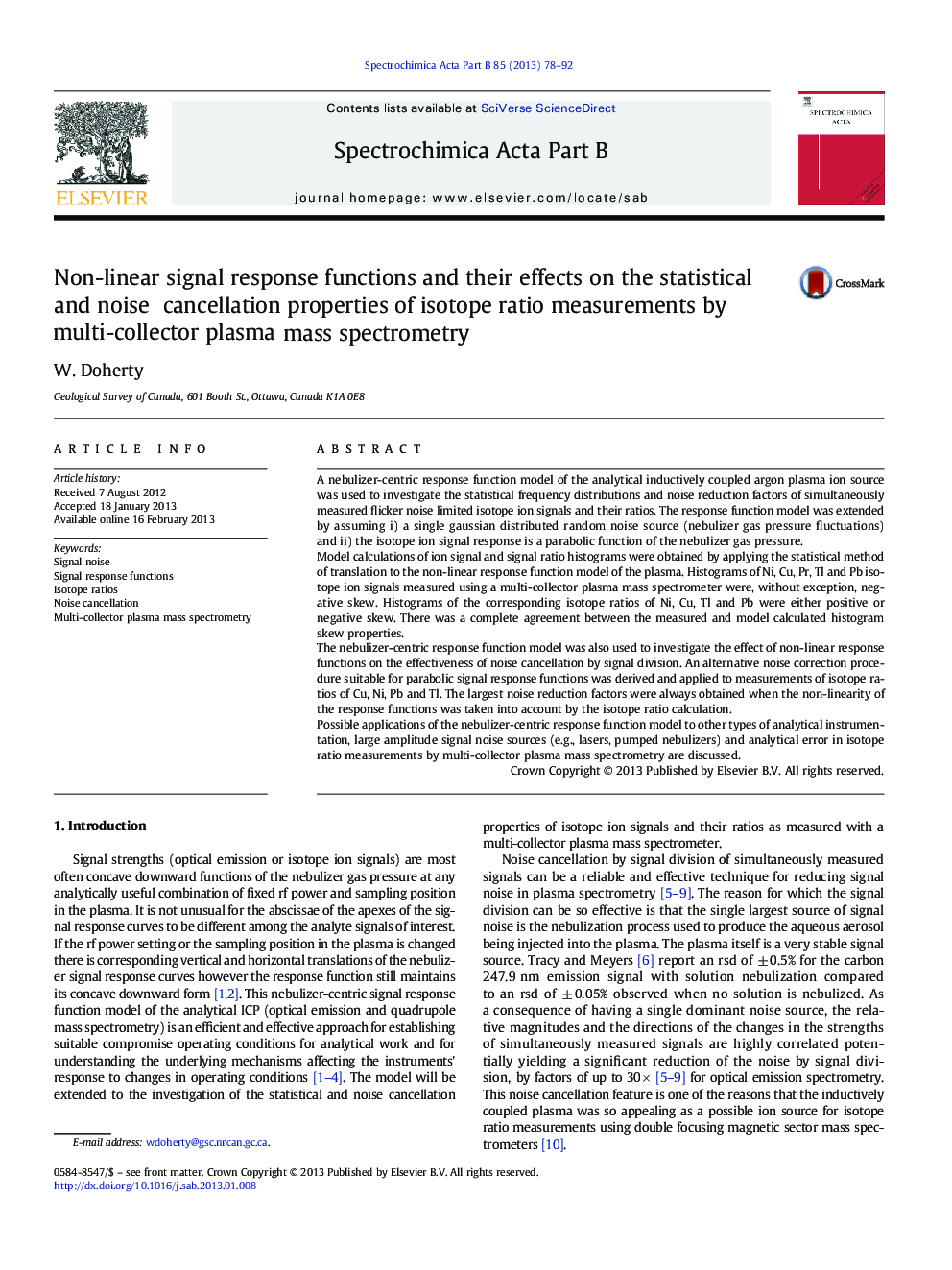| Article ID | Journal | Published Year | Pages | File Type |
|---|---|---|---|---|
| 1239675 | Spectrochimica Acta Part B: Atomic Spectroscopy | 2013 | 15 Pages |
A nebulizer-centric response function model of the analytical inductively coupled argon plasma ion source was used to investigate the statistical frequency distributions and noise reduction factors of simultaneously measured flicker noise limited isotope ion signals and their ratios. The response function model was extended by assuming i) a single gaussian distributed random noise source (nebulizer gas pressure fluctuations) and ii) the isotope ion signal response is a parabolic function of the nebulizer gas pressure.Model calculations of ion signal and signal ratio histograms were obtained by applying the statistical method of translation to the non-linear response function model of the plasma. Histograms of Ni, Cu, Pr, Tl and Pb isotope ion signals measured using a multi-collector plasma mass spectrometer were, without exception, negative skew. Histograms of the corresponding isotope ratios of Ni, Cu, Tl and Pb were either positive or negative skew. There was a complete agreement between the measured and model calculated histogram skew properties.The nebulizer-centric response function model was also used to investigate the effect of non-linear response functions on the effectiveness of noise cancellation by signal division. An alternative noise correction procedure suitable for parabolic signal response functions was derived and applied to measurements of isotope ratios of Cu, Ni, Pb and Tl. The largest noise reduction factors were always obtained when the non-linearity of the response functions was taken into account by the isotope ratio calculation.Possible applications of the nebulizer-centric response function model to other types of analytical instrumentation, large amplitude signal noise sources (e.g., lasers, pumped nebulizers) and analytical error in isotope ratio measurements by multi-collector plasma mass spectrometry are discussed.
► Isotope ion signal noise is modelled as a parabolic transform of a gaussian variable. ► Flicker noise limited isotope ion signals always produced negative skew histograms. ► The corresponding isotope ratio histograms were symmetric, negative or positive skew. ► Skew direction is predictable from relations among the response function coefficients. ► Non-linear signal division improved noise cancellation, typically by 3 × to 10 ×.
